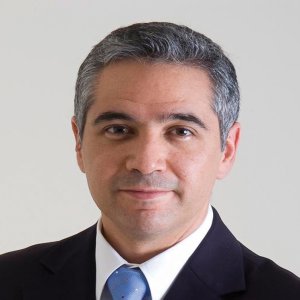Unique Characteristics in Luxury Commercial Segment

STORY INLINE POST
When Daimler reinforced its four-decade presence in Mexico through the dedication of its Monterrey facility to production of Mercedes-Benz buses 20 years ago, the market conditions at play differed considerably to today. Jan Hegner, CEO of Daimler Buses México, explains that while the Mexican transportation market has immeasurably developed and evolved, what remains unchanged is its priority for the company. “Right now there is more competition in all segments, both from OEMs and wider product ranges, but all in all, we see the growth in Mexico as an opportunity. On an international scale, Mexico is increasing its competitive position and we want to participate in this opportunity.” “With the ongoing reforms, the growing population and improving education, as well as the attractive production costs there are plenty of opportunities to come. We hope to grow faster than the market and reclaim our 50% market share,” says Hegner.
Daimler Buses identifies its main stake as being in the urban segment, which represents an important sales volume. The country’s three largest cities, Mexico City, Guadalajara, and Monterrey, remain pivotal markets for the company. Their respectively large populations have created heavy public transportations needs, and Hegner explains that trends in these microcosms permeate other towns in the country, making them important commercial laboratories. “If we are able to prove the quality of our products in those markets then we can attract the attention of others,” asserts Hegner. However the company’s CEO is aware that as a full operator, Daimler Buses would be foolish to neglect wider segments. The premium bus maker has not had a presence in the coach segment for a number of years but believes that its ability to provide a combination of optimal TCO, quality, safety, and comfort give it a strong product offering. Hegner explains, “We have a robust proposition with our new G7-product family with which we can cover all raised floor segments. We currently see that the market place is appreciating the wide range of different models as well as the high degree of customization.”
Discussing the impact of the positioning of Mercedes-Benz as a luxury brand, Hegner explains that there is a difference in perception of the very concept of ‘luxury’ in the commercial and passenger segments. On the commercial vehicle side, luxury means reliability. As Hegner asserts, “Heavy vehicles are work horses and they have to run day in and day out. That is where we differentiate the definition of luxury in the two segments. In the commercial segment premium is synonymous with the erasure of unexpected down time, and consistently efficient operation.” Optimized uptime and comparatively low TCO are the assets that have come to be the most important differentiators. Despite such strengths the race to maintain and gain market share necessitates constant evolution. Daimler Buses continues to introduce new technologies to the market, and is in the process of upgrading its product portfolio to meet Euro VI emission standards, currently under governmental discussion for implementation by 2018. The company already has installed Euro V engines in all of their raised floor vehicles. In terms of alternative fuel systems, Hegner explains that Mercedes-Benz Mexico can tap into developments made by the wider Daimler group in CNG, diesel, hybrids, full electrical vehicles, as well as fuel cell technology for different segments and regions. Mexico’s wealth of natural gas is invariably keeping the attentions of many on CNG technology, which Daimler Buses is beginning to offer to the urban bus segment. “We are focusing on the urban segment because that is where the market is developing and where the needed infrastructure can more easily be installed,” explains Hegner. However ultimately the aim of all new technologies for the sector is to reduce fuel consumption and exhaust emissions, and Hegner counters that although CNG is considered to be a clean technology, it still involves combustion. “The long term target should be to replace combustions engines with non-thermic engines, such as the fuel cell.” Hegner believes that for the next 20 years, diesel will remain the most significant fuel for ground transportation. OEMs will need to continuously improve diesel engines in terms of reducing consumption and emissions. In tandem the integration of electrical components for on board aggregates and vehicle propulsion will offer further reduction potentials. “Diesel-hybrid technology is a bridge technology that needs to further be developed, as the fuel cell technology still is some 20 years away from widespread economic deployment. At the moment we have CNG and that is in what we will focus on,” says Hegner.
The entire market in Mexico must play a role in technology adaptation including the maintenance network, dealer network, the large fleets, and the municipal depots. All these elements will require education and preparation to successfully receive and embrace new, more efficient, but also more complicated technologies. Hegner warns that if the proper circumstances in terms of knowledge, maintenance and fueling infrastructure are not created, any new technology bears the risk of unexpected down time and subsequent economic losses for the operator.




















